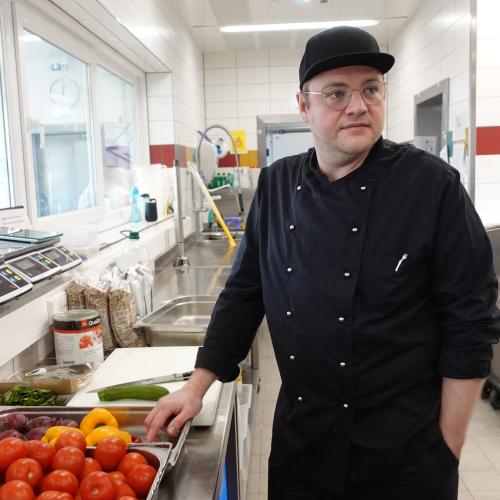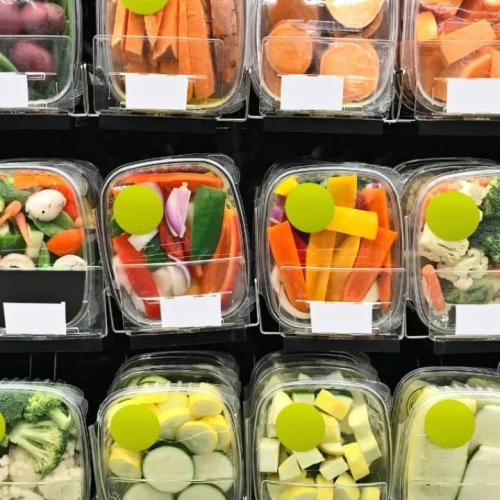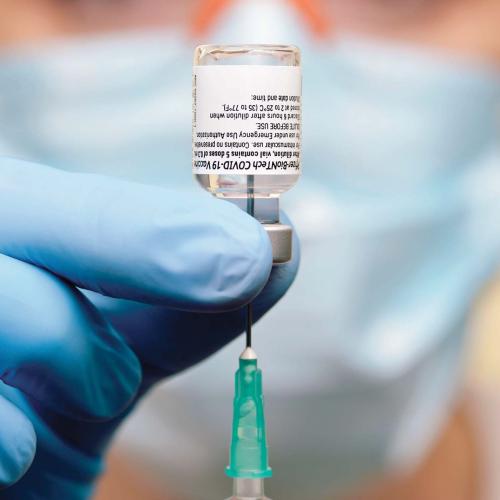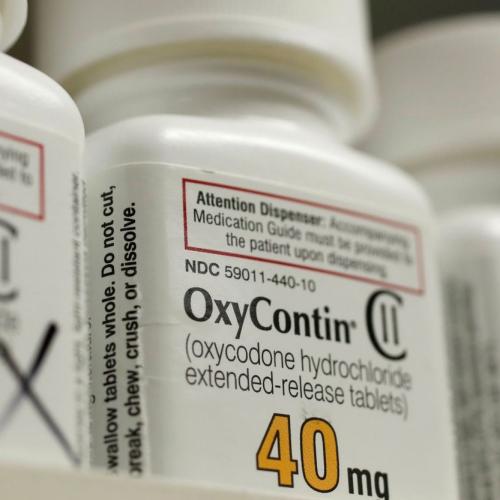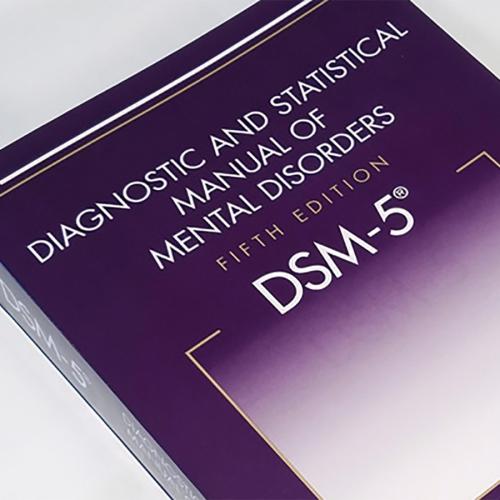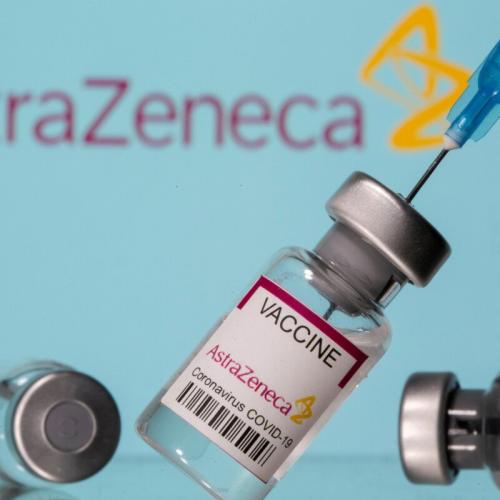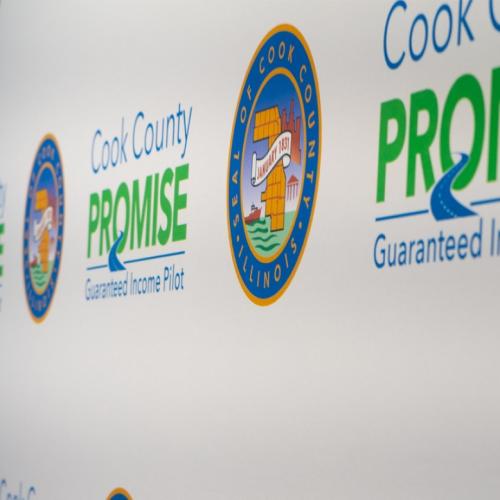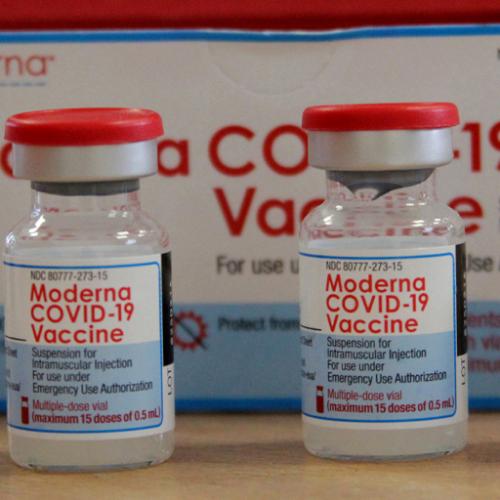Food Corruption News Articles
Below are key excerpts of revealing news articles on food system corruption from reliable news media sources. If any link fails to function, a paywall blocks full access, or the article is no longer available, try these digital tools.
For further exploration, delve into our comprehensive Health and Food Corruption Information Center.
Animal agriculture industry groups defending factory farms engage in campaigns of surveillance, reputation destruction, and other forms of retaliation against industry critics and animal rights activists, documents obtained through a FOIA request from the U.S. Department of Agriculture reveal. That the USDA possesses these emails and other documents demonstrates the federal governments knowledge of, if not participation in, these industry campaigns. These documents detail ongoing monitoring of the social media of news outlets, including The Intercept, which report critically on factory farms. They reveal private surveillance activities aimed at animal rights groups and their members. They include discussions of how to create a climate of intimidation for activists who work against industry abuses, including by photographing the activists and publishing the photos online. And they describe a coordinated ostracization campaign that specifically targets veterinarians who criticize industry practices. One of the industry groups central to these activities is the Animal Agriculture Alliance, which represents factory farms and other animal agriculture companies. The group boasts that one of its prime functions is Monitoring Activism, by which they mean: We identify emerging threats and provide insightful resources on animal rights and other activist groups by attending their events, monitoring traditional and social media and engaging our national network.
Note: Watch an interview with Dr. Crystal Heath, a veterinarian targeted by Animal Agricultural Alliance for her activism against inhumane factory farming practices. For more along these lines, see concise summaries of deeply revealing news articles on food system corruption from reliable major media sources.
Farmers around the country have been forced to dump milk and waste fresh produce as schools, restaurants and other institutions remain closed due to the coronavirus pandemic. In response, supermarket chain Publix launched a new initiative Wednesday to help struggling farmers and get the food to Americans who need it most. The company's press release said it will purchase fresh produce and milk from farmers impacted by the COVID-19 crisis and donate the goods directly to Feeding America food banks that are in its "operating area." During the first week of the initiative alone, some 150,000 pounds of produce and 43,500 gallons of milk is expected to be donated, the company said. "As a food retailer, we have the unique opportunity to bridge the gap between the needs of families and farmers impacted by the coronavirus pandemic," said Todd Jones, Publix CEO. "In addition to providing much needed produce and milk to food banks, this initiative provides financial support to farmers during this challenging time." In addition to the new initiative, Publix Super Markets Charities recently made donations which totaled $2 million to help Feeding America's member food banks amid the crisis. Feeding America, which is the largest hunger-relief organization in the U.S., said that before the coronavirus crisis there were 37 million people in the nation who did not have enough food. The number is now expected to increase by an additional 17 million.
Note: Explore a treasure trove of concise summaries of incredibly inspiring news articles which will inspire you to make a difference.
Soon, soybeans will be bred to yield stable oil without the addition of dangerous trans fats. Lettuce will be grown to handle warmer, drier fields. Wheat to contain less gluten. And pigs bred to resist deadly viruses. Ten years ago, such genetic changes would have been considered science fiction or so far off into the future of breeding as to be almost unimaginable. But gene editing, particularly with a tool called Crispr-Cas9, has made it much easier and more efficient to tinker with the genomes of plants and animals. The first Crispr-edited products will begin reaching the market this year, and researchers believe its only a matter of time before US grocery shelves could be filled with gene-edited produce, grains and meat. The technology will be subject to stringent health and environment review, as well as labeling requirements in the EU, but not in the US. The US Department of Agriculture (USDA) issued a statement last March saying it would not regulate crops whose genetic changes could have been produced with conventional breeding. The European court of justice, by contrast, ruled last summer that gene-edited crops should be regulated as GMOs. The scientific challenges have been largely settled. But political and social ones remain. Jennifer Kuzma, co-director of the Genetic Engineering and Society Center at North Carolina State University, said US consumers are willing to pay 20% more to avoid GMO foods, and nearly half of the public reports actively avoiding genetically modified ingredients and food.
Note: Read an excellent addendum to this important article by GMO expert Jeffrey Smith recommending caution in these little-tested new products. For more along these lines, see concise summaries of deeply revealing news articles on GMOs and food system corruption from reliable major media sources.
Our food and our health are deeply connected. American healthcare spending has ballooned to $3.5tn a year, and yet we are sicker than most other developed countries. Meanwhile, our food system contains thousands of chemicals that have not been proven safe and many that are banned in other countries. Instead of potentially hazardous substances being banned from our food, as they are in, say, Europe, chemicals of concern are typically considered innocent until proven guilty. As a result, we are the guinea pigs in our own experiment. For decades weve operated on the principle that if we can selectively kill off the unwanted parts of the natural world, we can control our futures. Farmers operate that way, but also homeowners, highway crews and landscapers. We spread herbicides, fungicides, pesticides, insecticides, fertilizers, antibiotics, hormones and various other toxins which kill everything around. Even good things. Were becoming aware of the loss of what we can see: bees, butterflies, the diverse plant life of our ecosystems. We also need to worry about the invisible microbiome and fungi in the soil that nurture life above, store carbon and absorb water. By trying to control crops with herbicides, antibiotics and pesticides, weve actually bred bugs, weeds and diseases that are resistant to our control. And our chemical onslaught will have long-term effects. Our fertilizers and pesticides leach into groundwater and streams, head out to sea and create dead zones. They also leach into our drinking water.
Note: For more along these lines, see concise summaries of deeply revealing news articles on food system corruption from reliable major media sources.
It may sound odd, but in America, your loaf of bread can contain ingredients with industrial applications additives that also appear in things like yoga mats, pesticides, hair straighteners, explosives and petroleum products. Some of these chemicals, used as optional whiteners, dough conditioners and rising agents, may be harmful to human health. Potassium bromate, a potent oxidizer that helps bread rise, has been linked to kidney and thyroid cancers in rodents. Azodicarbonamide (ACA), a chemical that forms bubbles in foams and plastics like vinyl, is used to bleach and leaven dough but when baked, it, too, has been linked to cancer in lab animals. Other countries, including China, Brazil and members of the European Union, have weighed the potential risks and decided to outlaw potassium bromate in food. India banned it in 2016, and the UK has forbidden it since 1990. Azodicarbonamide has been banned for consumption by the European Union for over a decade. But despite petitions from several advocacy groups some dating back decades the US Food and Drug Administration (FDA) still considers these to be Gras or generally recognized as safe to eat, though plenty of experts disagree. The FDA does not review every additive that makes its way into food. Instead, companies can rely on their own experts to determine whats safe and what isnt. And once something was determined as Gras, [medical toxicologist Ryan] Marino said, there is not often any financial incentive for additional testing.
Note: For more along these lines, see concise summaries of deeply revealing news articles on food system corruption from reliable major media sources.
You can protect yourself from cancer by eating organic. Those who frequently eat organic foods lowered their overall risk of developing cancer, a study published Monday in JAMA Internal Medicine finds. Specifically, those who primarily eat organic foods were more likely to ward off non-Hodgkin lymphoma and postmenopausal breast cancer compared to those who rarely or never ate organic foods. A team of researchers looked at the diets of 68,946 French adults. More than three-quarters of the volunteers were women, in their mid-40s on average. Comparing the participants' organic food scores with cancer cases, the researchers calculated a negative relationship between high scores (eating the most organic food) and overall cancer risk. Those who ate the most organic food were 25% less likely to develop cancer. Specifically, they were 73% less likely to develop non-Hodgkin lymphoma and 21% less likely to develop post-menopausal breast cancer. Even participants who ate low-to-medium quality diets yet stuck with organic food experienced a reduced risk of cancer, the authors found. The authors theorize a "possible explanation" for the negative relationship between organic food and cancer risk stems from the "significant" reduction of contamination that occurs when conventional foods are replaced by organic foods. The new findings are consistent with those of the International Agency for Research in Cancer, which found pesticides are cancer causing in humans
Note: For more along these lines, see concise summaries of deeply revealing news articles on food corruption from reliable major media sources. Then explore the excellent, reliable resources provided in our Health Information Center.
Its been three weeks since a San Francisco jury found that exposure to Monsantos Roundup herbicides contributed to former school groundskeeper Dewayne Lee Johnsons terminal cancer and awarded a stunning $289 million in damages. During that time, weve seen repeated assertions from the pesticide giant and its allies that, in fact, the jury was wrong. Corporate assurances of safety leave out one important word - a word that is critically important to anyone who wants to make an informed decision about the cancer risk associated with ... glyphosate-based herbicides. That word is independent. Truly independent research has shown that there is reason for concern. Independent and peer-reviewed works ... convinced the cancer research arm of the World Health Organization to determine that glyphosate is a probable human carcinogen. In the wake of that WHO finding, California added glyphosate to the states list of cancer-causing chemicals. Monsantos response to that 2015 classification was more manipulated science. An independent review of glyphosate showed up in a peer-reviewed scientific journal decrying the IARC classification. The review not only was titled as being independent, but declared that no Monsanto employee had any involvement in the writing of it. Yet the companys internal emails, turned over in discovery associated with the litigation, revealed that a Monsanto scientist in fact aggressively edited and reviewed the analysis prior to its publication.
Note: The EPA continues to use industry studies to declare Roundup safe while ignoring independent scientists. A recent independent study published in a scientific journal also found a link between glyphosate and gluten intolerance. Internal FDA emails suggest that the food supply contains far more glyphosate than government reports indicate. For more along these lines, see concise summaries of deeply revealing news articles on food system corruption and health.
US government scientists have detected a weedkiller linked to cancer in an array of commonly consumed foods, emails obtained through a freedom of information request show. The Food and Drug Administration (FDA) has been testing food samples for residues of glyphosate, the active ingredient in ... widely used herbicide products, for two years, but has not yet released any official results. Documents obtained by the Guardian show the FDA has had trouble finding any food that does not carry traces of the pesticide. I have brought wheat crackers, granola cereal and corn meal from home and theres a fair amount in all of them, FDA chemist Richard Thompson wrote to colleagues in an email last year regarding glyphosate. That internal FDA email ... is part of a string of FDA communications that detail agency efforts to ascertain how much of the popular weedkiller is showing up in American food. Glyphosate is best known as the main ingredient in Monsanto Cos Roundup brand. More than 200m pounds are used annually by US farmers. Thompsons detection of glyphosate ... will probably not be included in any official report. Separately, FDA chemist Narong Chamkasem found over-the-tolerance levels of glyphosate in corn, detected at 6.5 parts per million, an FDA email states. The legal limit is 5.0 ppm. An illegal level would normally be reported to the Environmental Protection Agency (EPA), but an FDA supervisor wrote to an EPA official that the corn was not considered an official sample.
Note: The negative health impacts of Monsanto's Roundup are well known. Yet the EPA continues to use industry studies to declare Roundup safe while ignoring independent scientists. For more along these lines, see concise summaries of deeply revealing news articles on food system corruption and health.
Bird populations across the French countryside have fallen by a third over the last decade and a half, researchers have said. Dozens of species have seen their numbers decline, in some cases by two-thirds, the scientists said in a pair of studies one national in scope and the other covering a large agricultural region in central France. The situation is catastrophic, said Benoit Fontaine, a conservation biologist at Frances National Museum of Natural History and co-author of one of the studies. A migratory song bird, the meadow pipit, has declined by nearly 70%. The museum described the pace and extent of the wipe-out as a level approaching an ecological catastrophe. The primary culprit, researchers speculate, is the intensive use of pesticides on vast tracts of monoculture crops, especially wheat and corn. The problem is not that birds are being poisoned, but that the insects on which they depend for food have disappeared. Recent research ... has uncovered similar trends across Europe. Flying insects have declined by 80%, and bird populations has dropped by more than 400m in 30 years. Despite a government plan to cut pesticide use in half by 2020, sales in France have climbed steadily, reaching more than 75,000 tonnes of active ingredient in 2014, according to European Union figures. What is really alarming, is that all the birds in an agricultural setting are declining at the same speed, even generalist birds, which also thrive in other settings such as wooded areas, said [ecologist Vincent] Bretagnolle.
Note: A United Nations report recently noted that pesticides have produced catastrophic impacts on the environment, human health and society as a whole, and condemned the pesticide industry for aggressively promoting lies about the usefulness of their products. For more along these lines, see concise summaries of deeply revealing food system corruption news articles from reliable major media sources.
No food fit for human consumption will be wasted by Tesco's UK stores by the end of February, the retail giant says. Chief executive Dave Lewis told the Daily Telegraph food waste had been "talked about for years" as he unveiled the plans for all 2,654 stores. Urging other chains to follow suit, he said edible food should be used for people, not go to waste. Tesco, with all major UK supermarkets, has signed a commitment to cut food waste by one-fifth within a decade. The voluntary agreement is known as the Courtauld Commitment 2025. Mr Lewis ... said the contrast between the amount of wasted food in the UK and the situation in countries suffering food shortages was "really stark". He said: "Last year we sold 10 million tons [10.2 million tonnes] of food to the British public. But even if our waste is just 0.7% of the food, that's still 70,000 tons [71,100 tonnes] of food. Tesco says it cuts waste by selling surplus groceries with "reduced to clear" stickers and [by using] an app, FoodCloud, to scan and upload surplus food that stores have at the end of the day, which is shared with registered charities that collect the food. "That goes a long way in reducing charities' bill burdens, so they can spend the money on ... providing much more needed services," Mr Lewis said. "Food waste has been talked about for years but if Tesco can make this work, with all of our different stores across the country, then why can't everybody," he added.
Note: Explore a treasure trove of concise summaries of incredibly inspiring news articles which will inspire you to make a difference.
The sugar industry funded animal research in the 1960s that looked into the effects of sugar consumption on cardiovascular health - and then buried the data when it suggested that sugar could be harmful, according to newly released historical documents. Stanton Glantz, a professor of medicine at U.C.S.F. and an author of the new report, said that even though the newly discovered documents are 50 years old, they are important because they point to a decades-long strategy to downplay the potential health effects of sugar consumption. This is continuing to build the case that the sugar industry has a long history of manipulating science, Dr. Glantz said. The documents described in the new report are part of a cache of internal sugar industry communications that Cristin E. Kearns, an assistant professor at the U.C.S.F. School of Dentistry, discovered in recent years. Last year, an article in The New York Times highlighted some of the previous documents that Dr. Kearns had uncovered, which showed that the sugar industry launched a campaign in the 1960s to counter negative attitudes toward sugar in part by funding sugar research that could produce favorable results. The campaign was orchestrated by John Hickson, a top executive at the sugar association who later joined the tobacco industry. Mr. Hickson secretly paid two influential Harvard scientists to publish a major review paper in 1967 that minimized the link between sugar and heart health and shifted blame to saturated fat.
Note: Read more about the sugar industry conspiracy. For more along these lines, see concise summaries of deeply revealing news articles on corruption in the food system and in the scientific community.
Opposition from France and Italy doomed a European Union vote on Thursday to reauthorize the worlds most popular weedkiller, glyphosate, a decision that came hours after Arkansas regulators moved to ban an alternative weedkiller for much of 2018. The decisions are a double blow to the agrochemical industry and particularly to the chemicals giant Monsanto. The effort to reauthorize the weedkiller failed to receive a majority even though regulators were seeking only a five-year reauthorization instead of the typical 15, amid controversy and disputes about cancer risk that have made glyphosates future in Europe uncertain. Its approval in the region expires in mid-December. In Arkansas, regulators voted on Wednesday to ban the use of another major weedkiller, dicamba ... amid widespread reports of crop damage. Dicamba has been around for decades, but new versions have been developed by Monsanto, BASF and DuPont as an alternative to Roundup. Taken together, the decisions reflect an increasing political resistance to pesticides in Europe and parts of the United States, as well as the specific shortcomings of dicamba. Dicamba has damaged more than 3.6 million acres of soybean crops in 25 states. The European Unions decision followed years of haggling and delay. But glyphosate ... has been plunged into controversy since the International Agency for Research on Cancer, part of the World Health Organization, declared it a probable carcinogen in 2015.
Note: Monsanto was recently banned from the European parliament after shunning important hearings with regulators. This company's use of scientists as industry puppets, its lies to regulators and the public and its massive lobbying campaign have not kept information on the risks and dangers of its products from getting out. For more along these lines, see concise summaries of deeply revealing news articles on food system corruption and health.
The latest study to look at the long-term effects of Roundup, a popular weed killer developed by Monsanto in the 1970s, raises questions about the herbicides possible contributions to poor health. The study ... tracked people over the age of 50 in southern California from 1993-1996 to 2014-2016, with researchers periodically collecting urine samples. The percentage of people who tested positive for a chemical called glyphosate, which is the active ingredient in the herbicide Roundup, shot up by 500% in that time period. The levels of glyphosate also spiked by 1208% during that time. Exactly what that means for human health isnt quite clear yet. One trial from the UK, in which rats were fed low levels of glyphosate throughout their lives, found that the chemical contributed to ... a condition in which fat accumulates in the liver and contributes to inflammation and scarring of the tissue. [Researcher Paul] Mills says that the levels of glyphosate documented in the people in his study were 100-fold greater than those in the rats. Mills says the findings should make people more aware of what they are ingesting along with their food. While Roundup was developed to eliminate most weeds from genetically modified crops - and thus reduce the amount of pesticides sprayed on them - recent studies have found that many weeds are now resistant to Roundup. That means growers are using more Roundup, which could only exacerbate potential negative health effects on people who consume those products.
Note: Glyphosate is the most heavily used agricultural chemical in human history. According to a recent UN report, "the assertion promoted by the agrochemical industry that pesticides are necessary to achieve food security is not only inaccurate, but dangerously misleading." For more along these lines, see concise summaries of deeply revealing news articles on food system corruption and health.
Monsanto is under fire because the company's herbicide, Roundup (active ingredient: glyphosate), is suspected of being carcinogenic. The longstanding dispute about glyphosate has been brought to a head by the release of explosive documents. Monsanto's strategies for whitewashing glyphosate have been revealed in internal e-mails, presentations and memos. Even worse, these "Monsanto Papers" suggest that the company doesn't even seem to know whether Roundup is harmless to people's health. "You cannot say that Roundup is not a carcinogen," Monsanto toxicologist Donna Farmer wrote in one of the emails. "We have not done the necessary testing on the formulation to make that statement." The email ... is one of more than 100 documents that a court in the United States ordered Monsanto to provide as evidence after about 2,000 plaintiffs demanded compensation from Monsanto in class-action suits. They claim that Roundup has caused non-Hodgkin's lymphoma, a form of lymph node cancer. "The Monsanto Papers tell an alarming story of ghostwriting, scientific manipulation and the withholding of information," says Michael Baum, a partner in [a] law firm ... bringing one of the US class actions. Monsanto ... also behaved irresponsibly when it comes to the question of Roundup's absorption into the body. Back in 2002, the company's experts discovered that "between 5 and 10 percent" of the substance penetrated the skin of rats. As a consequence, the author of the email wrote: "We decided thus to STOP the study."
Note: Monsanto was recently banned from the European parliament after shunning important hearings with regulators. This company's use of scientists as industry puppets, its lies to regulators and the public and its massive lobbying campaign have not kept information on the risks and dangers of its products from getting out. For more along these lines, see concise summaries of deeply revealing news articles on food system corruption and health.
Monsanto lobbyists have been banned from entering the European parliament after the multinational refused to attend a parliamentary hearing into allegations of regulatory interference. It is the first time MEPs have used new rules to withdraw parliamentary access for firms that ignore a summons to attend parliamentary inquiries or hearings. Monsanto officials will now be unable to meet MEPs, attend committee meetings or use digital resources on parliament premises in Brussels or Strasbourg. While a formal process still needs to be worked through, a spokesman for the parliaments president Antonio Tajani said that the leaders of all major parliamentary blocks had backed the ban in a vote this morning. MEPs had been incensed at a Monsanto decision to shun a hearing organised by the environment and agriculture committees, with academics, regulators and campaigners, on 11 October. The meeting is expected to hear allegations that Monsanto unduly influenced regulatory studies into the safety of glyphosate, a key ingredient in its best-selling RoundUp weedkiller. Those who ignore the rules of democracy also lose their rights as a lobbyist in the European parliament, said the Green party president Philippe Lamberts. US corporations must also accept the democratic control function of the parliament. Monsanto cannot escape this. Monsanto spends between 300,000-400,000 (260,000 - 350,000) annually on lobbying in Brussels.
Note: Monsanto's use of scientists as industry puppets, its lies to regulators and the public and its massive lobbying campaign have not kept information on the risks and dangers of its products from getting out. For more along these lines, see concise summaries of deeply revealing news articles on food system corruption and health.
Mike Miles hadnt had a stable job in years. This wasnt due to a poor work ethic. Because Miles had a criminal record, he was always cut loose when it came time to let staff go. It was like walking on eggshells. You just never knew when youd be gone, he recounted. After his release from prison in 2007, Miles struggled to find stability. It wasnt until October 2015 ... that a cousin told Miles about Lancaster Food Company, a local business that ... focuses on hiring formerly incarcerated people. Miles submitted an application. He got an interview. And, soon after that, he began a new job, encompassing everything from food production to maintenance, not to mention a livable wage of $15 an hour. He says its the best job hes ever had. Miles scenario is rare in Lancaster, where the poverty rate holds steady at 30 percent. This figure riled Charlie Crystle, Lancasters co-founder and CEO. He believes that food production is a key way to meet people where they are, referring to former offenders who may lack a high school or college degree. Lancaster produces products like bread and maple syrup, all of it USDA certified organic. Crystle says he wants to inspire other companies and entrepreneurs to rethink their current practices and ignite conversations around minimum wage and employment opportunities for everyone, including ex-offenders. Not one employee has quit. According to Mike Miles, having a steady job has given him new courage.
Note: Explore a treasure trove of concise summaries of incredibly inspiring news articles which will inspire you to make a difference.
In the face of a changing climate and the challenges that come with it, companies the world over have been attempting to pull solutions out of thin air - literally. There are firms turning air into fuel and others transforming it into stone. Some are even extracting clean drinking water from it. Israels Water-Gen has built devices that create and store drinking water by harvesting condensation from the air. It was among a group of Israeli firms that presented their technological innovations at the United Nations General Assembly last week. Put simply, [our technology] leverages the same process as a dehumidifier, but instead captures and cleans the moisture, said Arye Kohavi, Water-Gens CEO. This plug-and-drink technology is fully independent of existing water infrastructure. All we require is an electrical outlet and the humidity found in the air. Water-Gen isnt the only company to market such a technology, but it says its machines ... are far more energy-efficient than any other water production device. Our technology takes one-fifth of the amount of energy used by other methods, Kohavi said. Water-Gen estimates the water its machines generates would cost less than 10 cents per gallon. The smallest device can yield up to 5 gallons daily, while the largest can produce more than 800 gallons a day. We think its possible to bring drinking water to all countries, Maxim Pasik, Water-Gens chairman, [said] in an interview. Whats important for us is to bring water to the people. This is a basic human right.
Note: Explore a treasure trove of concise summaries of incredibly inspiring news articles which will inspire you to make a difference.
Unpublished field trials by pesticide manufacturers show their products cause serious harm to honeybees at high levels, leading to calls from senior scientists for the companies to end the secrecy which cloaks much of their research. The research, conducted by Syngenta and Bayer on their neonicotinoid insecticides, were submitted to the US Environmental Protection Agency and obtained by Greenpeace after a freedom of information request. Neonicotinoids are the worlds most widely used insecticides and there is clear scientific evidence that they harm bees at the levels found in fields. Neonicotinoids were banned from use on flowering crops in the EU in 2013, despite UK opposition. The newly revealed studies show Syngentas thiamethoxam and Bayers clothianidin seriously harmed colonies at high doses, but did not find significant effects below concentrations of 50 parts per billion (ppb) and 40ppb respectively. Such levels can sometimes be found in fields. However, scientists said all such research should be made public. It is hard to see why the companies dont make these kinds of studies available, said Prof Dave Goulson, at the University of Sussex. It does seem a little shady to do ... the very studies the companies say are the most important ones - and then not tell people what they find. Syngenta had told Greenpeace in August that none of the studies Syngenta has undertaken or commissioned for use by regulatory agencies have shown damages to the health of bee colonies. Goulson said: That clearly contradicts their own study.
Note: CNN News reported in 2010 that Bayer covered up the link between its products and massive bee die-offs. Read more about how these pesticides sicken bees and harm food crops. For more along these lines, see concise summaries of deeply revealing food system corruption news articles from reliable major media sources.
The sugar industry paid scientists in the 1960s to play down the link between sugar and heart disease and promote saturated fat as the culprit instead, newly released historical documents show. The internal sugar industry documents ... published Monday in JAMA Internal Medicine, suggest that five decades of research into the role of nutrition and heart disease, including many of todays dietary recommendations, may have been largely shaped by the sugar industry. A trade group called the Sugar Research Foundation ... paid three Harvard scientists the equivalent of about $50,000 in todays dollars to publish a 1967 review of research on sugar, fat and heart disease. The studies used in the review were handpicked by the sugar group, and the article, which was published in the prestigious New England Journal of Medicine, minimized the link between sugar and heart health and cast aspersions on the role of saturated fat. The food industry has continued to influence nutrition science. For many decades, health officials encouraged Americans to reduce their fat intake, which led many people to consume low-fat, high-sugar foods that some experts now blame for fueling the obesity crisis. Today, the saturated fat warnings remain a cornerstone of the governments dietary guidelines, though in recent years the American Heart Association, the World Health Organization and other health authorities have also begun to warn that too much added sugar may increase cardiovascular disease risk.
Note: For more along these lines, see concise summaries of deeply revealing news articles on corruption in science and in the food system.
UCSF researchers believe they have uncovered a decades-old effort by the sugar industry to exonerate sugar as a dietary culprit for heart disease and shift the blame onto fat and cholesterol. In a paper published in Mondays JAMA Internal Medicine, the researchers reveal a scheme in which the sugar industrys main trade group paid two Harvard scientists to conduct a literature review in the mid-1960s that challenged emerging evidence linking sugar consumption to risk factors for cardiovascular disease. The Harvard scientists concluded there was no doubt that reducing dietary cholesterol and substituting polyunsaturated fat for saturated fat would prevent heart disease. Such recommendations helped persuade Americans to replace their butter with margarine and eat fat-free cookies and other sugar-laden treats. We have been indoctrinated in this belief that if we dont eat a low-fat diet, well die of the No. 1 killer disease, said co-author Laura Schmidt, professor of health policy at UCSF School of Medicine. Now weve learned the sugar industry paid off Harvard to tell us that. They showed that the Sugar Research Foundation, which is now known as the Sugar Association, paid Fredrick Stare and fellow faculty member D. Mark Hegsted the equivalent of about $50,000 in 2016 dollars to write a heavily critical review of studies that linked sucrose to heart disease. Their reviews were published in the prestigious New England Journal of Medicine in 1967.
Note: For more on how the sugar industry conspired against public health, see this Time magazine article. For even more along these lines, see concise summaries of deeply revealing health news articles from reliable major media sources. Then explore the excellent, reliable resources provided in our Health Information Center.
Important Note: Explore our full index to revealing excerpts of key major media news articles on several dozen engaging topics. And don't miss amazing excerpts from 20 of the most revealing news articles ever published.







